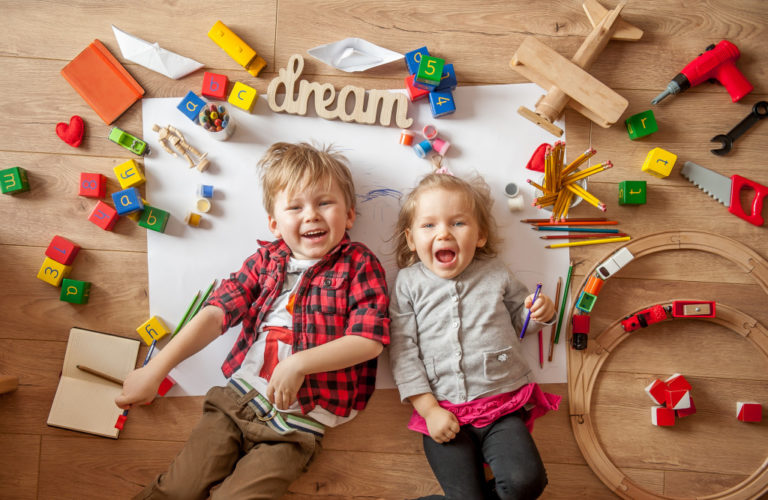Toys are the favorite play and pass times for kids. Children are born with a creative ingenuity that is evident from an early age. Kids use this creative side during play, and they can surprisingly make toys out of almost everything. Today, some companies build safe toys for toddlers and make play even more exciting. However, it is still cheaper and more creative to make these toys by hand. Such DIY toys are also packed with design and engineering challenges that spark the child’s creative side and help everyone learn. There is no better time to teach your child than when he/she is still a toddler. Here are some ideas about things and ways to make good toys for children and make their natural play exciting:
Paper and Plastic Toys
Paper toys are the simplest and safest types. You can make shapes of birds, animals, airplanes, and automobiles from paper and cardboard boxes. Paper and plastic are also ideal for toys because they come in forms as containers that easily convert them to toys. You can add plastic lids as wheels on a cardboard box and make a toy trolley from it.
Children love toying with plastic because it is also very ubiquitous. Making toys out of plastic and waste paper is also an excellent way to reuse this material and find some value out of material that would otherwise go straight into the wastebasket. Some of the best DIY toys to make with kids come from paper and cardboard because of their simplicity.
Paintings and Mosaics
Children love to play with color. During the early school years, the children spend most of their time painting and drawing patterns with paper. Self-made paintings and mosaics are an excellent way to nurture this artistic prowess in children and spark their potential. Your kid will learn faster and become more articulate when you introduce these toy ideas before school. Most kids have a knack for color and art, only that the opportunities to exercise this interest are limited. You would be surprised how many kids would develop their interest in art and possibly spur a renaissance in art if learning emphasized painting and mosaic toys.
Tin and Can Toys

Apart from paper and plastic, tins and cans also make good toys for children. Containers and cans offer an advantage of durability and longevity. While most of the toys made from paper and plastic barely last the day, a tin or can toy can last for a long time and serve extensive play needs in the child. Some of the best homemade toys from containers and cans make even better components than the commercially available products in the market. Additionally, it is also possible to use these toys for more than one function, which spurs ingenuity and creativity in home-made products for kids.
Strings and Crochet
It is also possible to create toys out of string, crotchet, and cloth. However, most of these toys require parental involvement to weave these products for the child’s play. Perhaps, the silver lining in this lies in the parent’s involvement in their child’s play and development. The type of toys encourages the parent to become creative and immerse themselves in the child’s growth process. Some of the best engineering concepts and machine development practices come from strings and their use as parts of toys.
Wood and Sticks
Kids also love spontaneity and impulsivity in their play. Wood and sticks are perhaps the most natural source of material for kids’ toys. Wood is so versatile as a toy material that it can form virtually any type and for children to use during their play activities. Additionally, wood for toys also encourages outdoor activities where the kid is more intimately in touch with nature and their environment.
The outdoor setting is a universal playbook that nurtures physical development and mental growth and accentuates the child’s health status. Wood is also so handy that its possibilities as a tool for play are almost endless. The best toys from nature come from wood because it is simply available and durable.
Home-made toys extend the virtual possibilities for creativity and play in children. Some of the best ideas for the development of toys come from nature as the universal playbook. Naturally done homemade toys also cut on cost and allow a more immersed involvement of both the child and their parent in the process of play. Home-made ideas also help create recycled toys, which cultivates sustainability among the young within society. This may be the right time to start teaching your child to be environmentally conscious.

